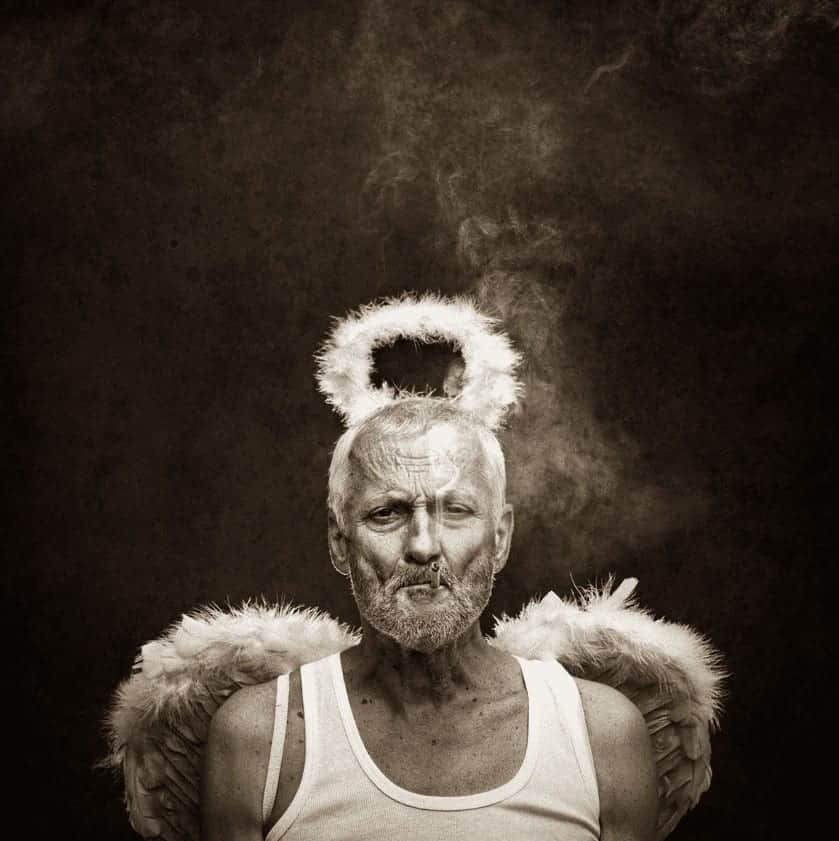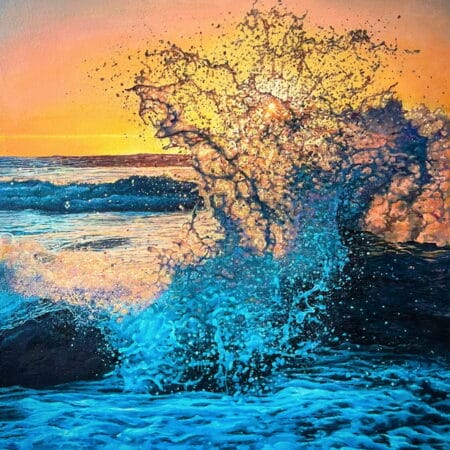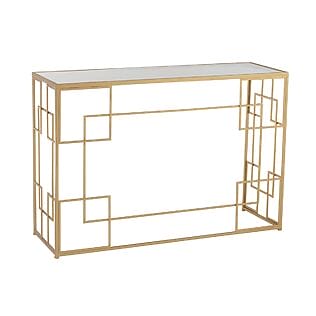Why art is important - about the diverse function of art
Art has existed since humanity. In the course of history, people have always created and recognized art.
It will always be an inseparable part of human life, regardless of ethnicity, political beliefs or cultural background. This manifested itself in the earliest days of humanity in various forms of expression such as prehistoric cave paintings or ancient musical instruments.
Regardless of whether it is a musical composition , a dance , a poem, a drawing , a painting or even graffiti - there is always and is a form of artistic representation.
Through the variety of art forms and techniques as well as the efforts of philosophers and artists to explain them and to give them their meaning, art has developed rapidly.
From the perspective of artists, art serves primarily as a means of communication that enables artists to express their ideas, sensations and emotions with the help of aesthetic and innovative productions. This strives to establish a deeper mental connection with your audience.
When we hear the term "art" , some people immediately associate museums or framed paintings with it. Many then think: "I'm actually not a big fan of it. I just don't understand some works."
How is it with you? Do you also believe that art is only for intellectual or art -loving people?

photographed by Adrianna Geo @adrigeo_, via Unsplash
In truth, art is open to everyone who wants to experience it. You can find them in many places: in songs that have a favor; In films that you look at; In poems and theater performances - even in the self -carved woodwork of the grandfather or the batic work of the grandmother arrested in the seventies.
Art is also always a reflection of our society and offers a creative escape from the hectic, postmodern world, which regularly overwhelms us with its omnipresent stimuli.
From abstract art to sculptures , music and literature - works of art offer us the opportunity to discover new perspectives and combine us with other people.
a gallery , browsing a book or trying yourself on an acrylic painting - there are many ways to distract yourself from everyday hectic life and enjoy the beauty of the arts.
All of this and much more can be seen than art.
The art history at a glance
Works of art are a reflection of cultural and social developments at different times in history.
They not only serve as a image, but act independently and have a function. Art represents a kind of coping strategy through which thoughts and feelings are revealed by artists - both by the people who have dealt with the processes of their time and those who deal with it today.
By considering art, knowledge about historical change processes as well as the versatility and migration of various signs, symbols and images are gained.
Art history can be roughly subdivided into seven large historical eras:
- The Stone Age and prehistoric art (approx. 300,000 - 1800 BC)
- The Art Movement of antiquity / antiquity (approx. 3000 - 1150 BC)
- Art in the Middle Ages (approx. 500 - 1400 AD)
- Renaissance (approx. 1420 - 1600)
- Baroque (approx. 1600 - 1780)
- The age of modern art (approx. 1790 - 1990)
- Postmodern / contemporary art (since 1990)
In ancient art, the main focus was on religious issues and the illustration of ideals. The Greek sculptures were characterized by their perfection in the form of proportions.

Photographed by Casey LoveGrove @Clovegrove7, via unsplash
In the Middle Ages , however, it was primarily sacred art such as church paintings or altarpieces. The Renaissance brought with it a revival of the classic heritage-artists were again based on the ideals of the Greek-Roman world and created works full of harmony and beauty.

photographed by K. Mitch Hodge @kmintchhodge, via Unsplash
The Baroque period emphasized drama —scenarios were often exaggerated to create emotions. Rococo followed the same stylistic principle, but placed more emphasis on lightness than weight.
The 19th century was characterized by the emergence of new artistic movements such as Romanticism and Impressionism , which broke new ground by depicting not only images but also emotions.
The modern age from around the beginning of the 20th century goes away from traditional techniques to abstraction. Cubism , Expressionism , as well as surrealism , is exemplary here
Contemporary art today deals with social issues of our time and new media technologies.
A detailed classification of all Art Periods And Movements in the visual art can be found with detailed descriptions in our article: Overview of the Art Periods And Movements - an introduction to art history.
Every era has its own character, but everyone has in common that they have continued to develop art. It is still the same today: artists experiment with new techniques, materials or topics to present something new to the world.
Art is an important part of cultures and eras because it conveys messages, emotions, and thought patterns. It reflects artists' engagement with their own world. In this sense, both past and present artists have grappled intensely with their culture and the spirit of the times.
Culture includes the entire spectrum of knowledge, faith, art, morality as well as laws and laws within a society . Both art and culture express different ways of thinking and attitudes and cannot be arranged hierarchically like different age. Art is the result of cultural and social conditions as well as an expression of human work with the deepest emotionality.
It remains true that art has been an important part of our society since time immemorial – it can inspire us, entertain us, and also stimulate reflection. Whether as an escape from everyday life or a reflection of it – art has many facets and offers everyone the opportunity to find themselves within it.
What is art? What does art mean for us?
You've probably come across the popular saying "Art comes from skill." Some may chuckle at this polemical statement, but this saying isn't without reason. The word "art" from the Latin "ars ," which can be translated as follows:
- Can
- Craft
- skill
- skill
Originally, the focus of the definition of art was focused on the finished work. Over time, however, the definition of this term has changed significantly and has adopted various meanings depending on the context.
In abenteuer philosophie – the magazine for practical philosophy – we find a very apt approach by the editor-in-chief, Mag. Dr.
According to him, too, the origins of art in the skill , but also at the same time know . The intention of art has always been to change the world. Whether she actually can do this depends not only on the skills of the artist, but also on our skills as a viewer . To make this possible, we have to develop from the passive viewer to an active participant.
Art comes from skills or know ( nosse auto posse ), maybe from both, at least it has to combine both to a good degree. Anyone who knows without being able to do is a theorist who is hardly trusted in terms of skills; Who can know without knowing is a mere practitioner or craftsman; The real artist connects both. "
We read this in Johann Gottfried von Herder's Kalligone Anno 1800. In the Berlin Morgenpost on February 25, 1938, Herder's statement unfortunately listened differently. Because the etymological derivation of the term "art" of "ability" the defamation formula of so -called "degenerate art" in National Socialism :
Art comes from ability; If she came from wanting, she would have to be called Wunst. " The first pictures appear like an illustration for this wit, with which the exhibition “degenerate art” at Königsplatz 5 now presents the visitors. It is really wing what is going against us here. And as senseless as this word sounds, just as senselessly gives us the spikes that have to do with painting only the material. ”
"art comes from skills" is often used in the art debate , but without knowing what devastating connotation this had in National Socialism. But in order art - as is so often the case in history - neither political instrumentalization, as it has been practiced in totalitarian regimens, nor the complete destruction of all traditions, as the activists of the 1970s sought.
Mag.
- "It is the beauty that, despite all the imperfections in the world, shows people the accessibility of the true. So this task has the" beautiful arts ": they are supposed to raise the human soul again in their heavenly origin. In order to create such works, the artist has to "" and know ". […] It is important to promote beauty and aesthetic upbringing. "
- "In antiquity, the beautiful had a meaning beyond all aesthetics that were connected to the essence of things (the being). And to seek this approach, meaning and meaning of a work, the German philosopher Hans Georg Gadamer (1900-2002) chooses a bridge to modern, or ultimately to every form of art. Play, symbol and firm. […] We can use a passive viewer of art to transform ourselves into an active art-experienced man. ”
- "The positive effects of music, theater playing or visual figures on the development of intelligence, concentration, creativity, social preservation, inner calm and balancing and balancedness are undisputed . Tinker, shape that we enable our children and do it with our children, and that we demand it in kindergartens and schools or choose school forms that enable our children. ”
Beyond the considerations of wine -or precisely fertilized -it can be seen that art also acts as a means of communicating love , truth and beauty . Among other things, their purpose is to achieve higher levels of existence and to expand awareness. A successful work of art therefore requires successful communication between the work and the viewer.
Without the presence of this connection, it can be critically noted that the work of art does not exist. If there is no impetus that motivates creatively, it is not an authentic art: it serves as a means of expression, so to speak.
In the Renaissance, artists emphasized the importance of technical skills for art.
Nowadays, this consideration is no longer so tight: a simple idea or an original concept can already be considered artistic (often found in performance art or concept art ). However, if you want to give a brief and general definition of "what is art" , you could say that it is a human activity or its result, which the viewer causes sensations, emotions or considerations.
In order to exist, an artist and at least one viewer are required.
Why art is so important
The cultural manager and owner of Konzlreun.de Steffen Peschel got it wonderfully about 10 years ago with his wording:
Culture stabilized, art breaks open. Both work together and cannot do without the other. We need both to live, such as flowing the blood in the vessels of our body. We need the certainty and the bordering horizon, but at the same time the freedom and the temptation to discover new things behind all the borders that ultimately think. ”
Art goes far beyond its practical applications and has a profound influence on our psychological constitution, our financial status and identity of our society.
Both in the present and in the past, the value of art is immeasurable.
German Cultural Council also clearly positioned itself here in 2010:
Art and culture are of paramount importance to society. They reflect social debates, they offer points of friction for engaging with reality, they point beyond everyday events. Art and culture are an expression of human existence.
For those who still have doubts about the meaning, I would like to list a list of arguments that produce an irresistible plea :
- We are naturally artistically assessed
- Art overcomes borders
- It enables artists to express themselves
- Art is of crucial importance for physical, emotional and mental well -being
- It enables self -expression, self -reflection and self -knowledge
- Art makes it possible to break down complex ideas and/or visually
- Documentary function: It helps to record history
- Culture provides space for identity and serves as a personal figurehead
- Art creates new, aesthetics and beautiful
- Art creates variety
- It promotes the development of imagination and creativity
- Culture creates understanding, promotes connections and leads to connection
- It provides inspiration, conveys knowledge and stimulates thinking about
- Art is an experiment, can inspire and fascinate
- Art creates a market and secures economic existences
- Art teaches us to argue and beat bridges
- Art and culture help us humans to develop us further
Source directory:
Literature:
- The Great Oxford Dictionary , Third Edition, Cornelson Verlag, ISBN-10: 0194406067
- Michael Hauskeller : What is art?: Positions of aesthetics from Plato to Danto , ISBN-10: 3406657095
- Reinold Schmücker: What is art? A foundation, Klostermann Rederei, Volume 70, ISBN-10: 3465041976
Internet:
- Art Affair: What is art?
- DWDS - The digital dictionary of the German language
- Franziska Boguslaw (art historian): The importance of art , Art & Wine Magazine
- Steffen Peschel : 35 reasons for art and culture , conceptfreun.de
- Deutscher Kulturrat EV : Art and Culture as a life nerve - statement by the German Cultural Council on Culture Finance
- Neoartbase : Reasons why art is important

Owner and Managing Director of Kunstplaza. Publicist, editor, and passionate blogger in the field of art, design, and creativity since 2011. Successful completion of a degree in web design as part of a university program (2008). Further development of creativity techniques through courses in free drawing, expressive painting, and theater/acting. Profound knowledge of the art market through many years of journalistic research and numerous collaborations with actors/institutions from art and culture.

















